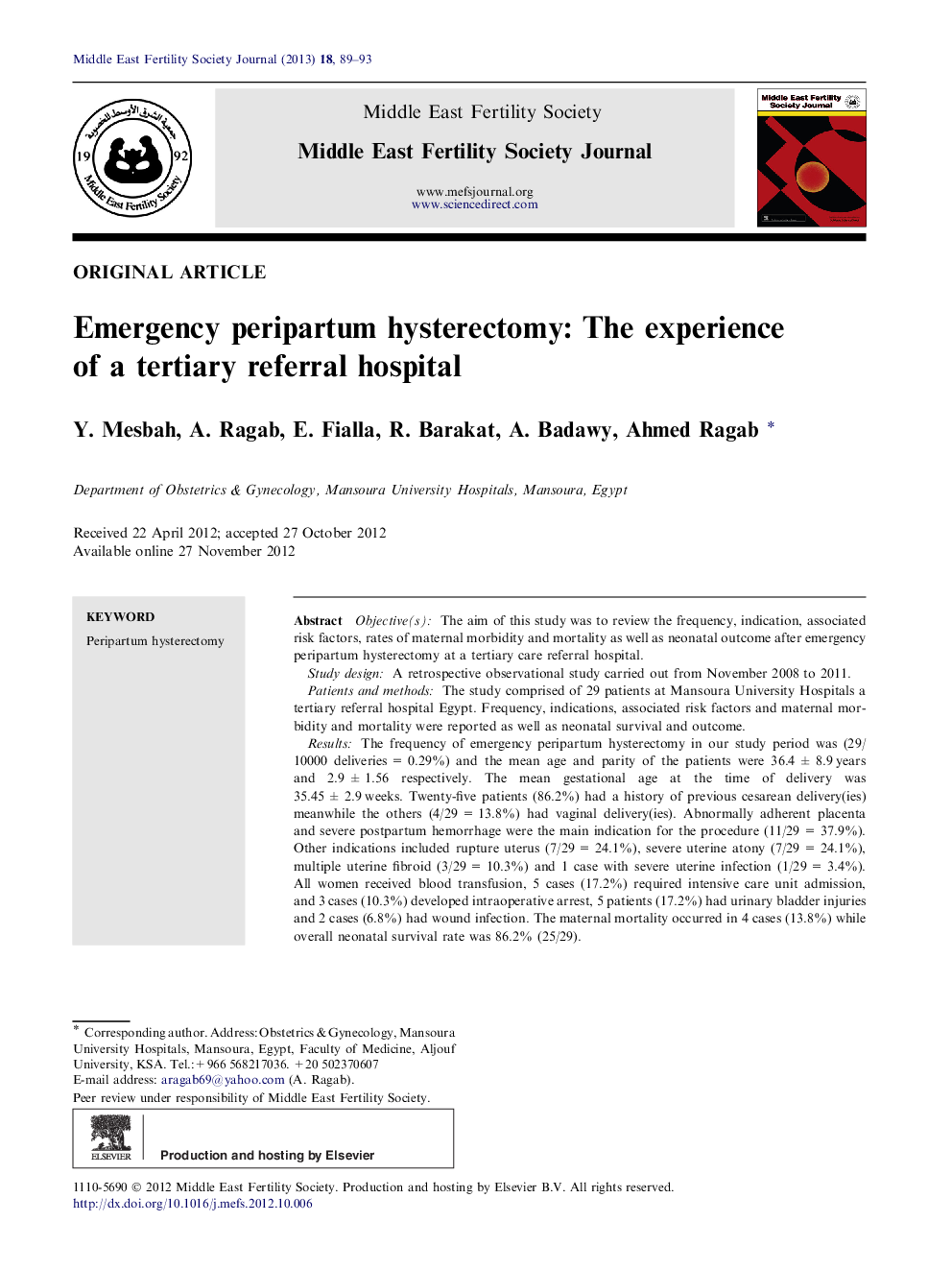| Article ID | Journal | Published Year | Pages | File Type |
|---|---|---|---|---|
| 3966239 | Middle East Fertility Society Journal | 2013 | 5 Pages |
Objective(s)The aim of this study was to review the frequency, indication, associated risk factors, rates of maternal morbidity and mortality as well as neonatal outcome after emergency peripartum hysterectomy at a tertiary care referral hospital.Study designA retrospective observational study carried out from November 2008 to 2011.Patients and methodsThe study comprised of 29 patients at Mansoura University Hospitals a tertiary referral hospital Egypt. Frequency, indications, associated risk factors and maternal morbidity and mortality were reported as well as neonatal survival and outcome.ResultsThe frequency of emergency peripartum hysterectomy in our study period was (29/10000 deliveries = 0.29%) and the mean age and parity of the patients were 36.4 ± 8.9 years and 2.9 ± 1.56 respectively. The mean gestational age at the time of delivery was 35.45 ± 2.9 weeks. Twenty-five patients (86.2%) had a history of previous cesarean delivery(ies) meanwhile the others (4/29 = 13.8%) had vaginal delivery(ies). Abnormally adherent placenta and severe postpartum hemorrhage were the main indication for the procedure (11/29 = 37.9%). Other indications included rupture uterus (7/29 = 24.1%), severe uterine atony (7/29 = 24.1%), multiple uterine fibroid (3/29 = 10.3%) and 1 case with severe uterine infection (1/29 = 3.4%). All women received blood transfusion, 5 cases (17.2%) required intensive care unit admission, and 3 cases (10.3%) developed intraoperative arrest, 5 patients (17.2%) had urinary bladder injuries and 2 cases (6.8%) had wound infection. The maternal mortality occurred in 4 cases (13.8%) while overall neonatal survival rate was 86.2% (25/29).ConclusionEmergency peripartum hysterectomy is still high in our locality representing a significant risk for the mother and the baby; hence health care authorities should raise the problem to decrease this burden.
